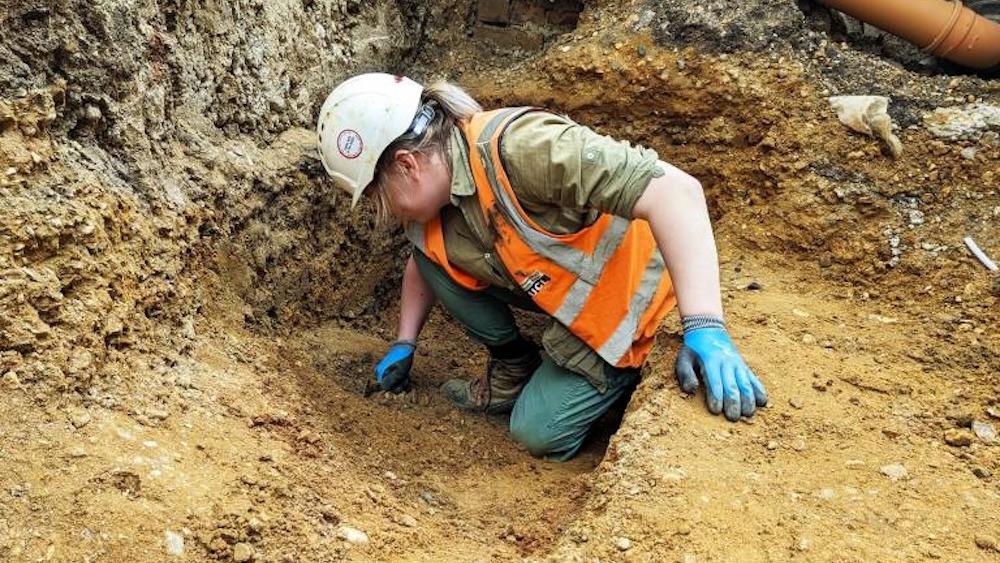Remains of 7th-century Saxon town discovered under central London
Archaeologists have found traces of a Saxon town known as Lundenwic buried beneath London.

Workers have uncovered the ruins of a Saxon town beneath The National Gallery in London, revealing that the centuries-old town was much larger than previously thought.
The discovery was made during underground tunneling for ongoing redevelopment of the art museum, in celebration of its 200th anniversary. Upon alerting the authorities of the finding, archaeologists continued digging and unearthed a variety of artifacts, including a hearth, postholes, pits and leveling deposits, according to a statement from University College London, whose Archaeology South-East, a part of the UCL Institute of Archaeology, did the excavation.
Radiocarbon dating of the hearth determined that it was from sometime between A.D. 659 and 774. The variety of holes and ditches pockmarking the site also offered a timeline of how different fence lines and property boundaries shifted over the centuries to encompass what was once the Saxon town of Lundenwic, which served as a waterfront trading center during the seventh century.
Prior to that, the site was the walled Roman city of Londinium, which was founded in 47 B.C. and inhabited until its settlers abandoned it in the fifth century.
Archaeologists also discovered postmedieval walls resting above the older Saxon layers, with the earliest wall likely being built during the 17th and 18th centuries.
Related: 'Completely unique' Roman mausoleum discovered in rubble of London building site
"The evidence we uncovered suggests the urban [center] of Lundenwic extends further west than originally thought," Stephen White, a senior archaeologist with Archaeology South-East who led the excavation, said in the statement. "This was made all the more exciting by having the chance to share that information, and how it relates to archaeology across London, with young people from this city."
Get the world’s most fascinating discoveries delivered straight to your inbox.
This isn't the only settlement from that period that archaeologists in the U.K. have found recently. In Northumberland, a county on the northeastern coast of England, a different archaeology group unearthed an Anglo-Saxon oven, loom weights and the remnants of a structure built with large posts, according to the BBC.
Jennifer Nalewicki is former Live Science staff writer and Salt Lake City-based journalist whose work has been featured in The New York Times, Smithsonian Magazine, Scientific American, Popular Mechanics and more. She covers several science topics from planet Earth to paleontology and archaeology to health and culture. Prior to freelancing, Jennifer held an Editor role at Time Inc. Jennifer has a bachelor's degree in Journalism from The University of Texas at Austin.


